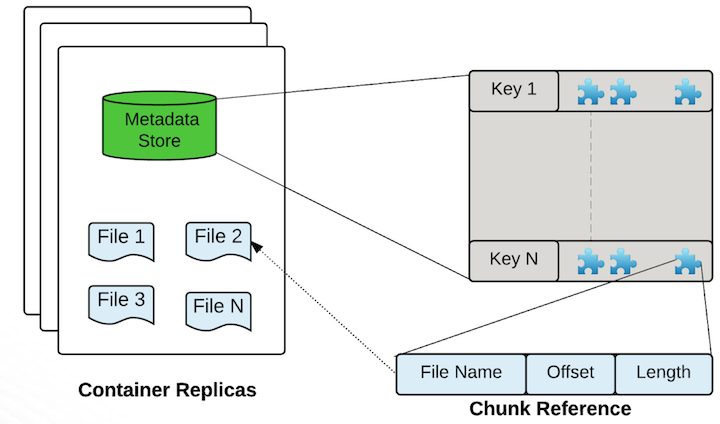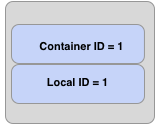Datanodes
Datanodes are the worker bees of Ozone. All data is stored on data nodes. Clients write data in terms of blocks. Datanode aggregates these blocks into a storage container. A storage container is the data streams and metadata about the blocks written by the clients.
Storage Containers

A storage container is a self-contained super block. It has a list of Ozone blocks that reside inside it, as well as on-disk files which contain the actual data streams. This is the default Storage container format. From Ozone’s perspective, container is a protocol spec, actual storage layouts does not matter. In other words, it is trivial to extend or bring new container layouts. Hence this should be treated as a reference implementation of containers under Ozone.
Understanding Ozone Blocks and Containers
When a client wants to read a key from Ozone, the client sends the name of the key to the Ozone Manager. Ozone manager returns the list of Ozone blocks that make up that key.
An Ozone block contains the container ID and a local ID. The figure below shows the logical layout out of Ozone block.

The container ID lets the clients discover the location of the container. The authoritative information about where a container is located is with the Storage Container Manager (SCM). In most cases, the container location will be cached by Ozone Manager and will be returned along with the Ozone blocks.
Once the client is able to locate the container, that is, understand which data nodes contain this container, the client will connect to the datanode and read the data stream specified by Container ID:Local ID. In other words, the local ID serves as index into the container which describes what data stream we want to read from.
Discovering the Container Locations
How does SCM know where the containers are located ? This is very similar to what HDFS does; the data nodes regularly send container reports like block reports. Container reports are far more concise than block reports. For example, an Ozone deployment with a 196 TB data node will have around 40 thousand containers. Compare that with HDFS block count of million and half blocks that get reported. That is a 40x reduction in the block reports.
This extra indirection helps tremendously with scaling Ozone. SCM has far less block data to process and the namespace service (Ozone Manager) as a different service are critical to scaling Ozone.